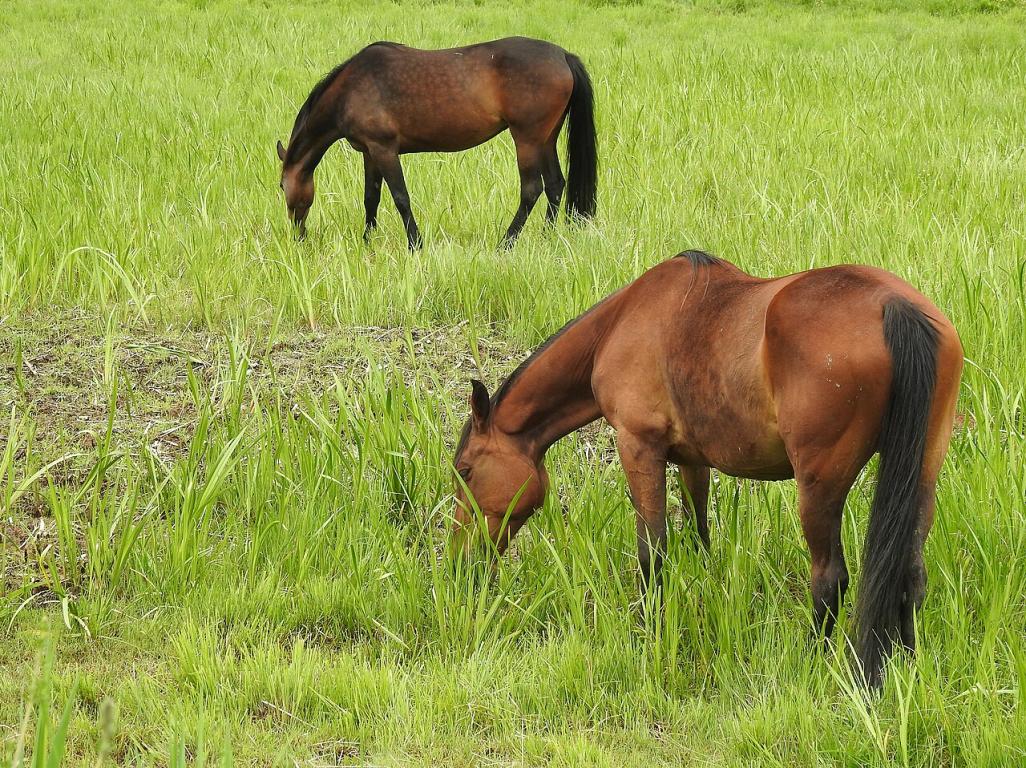
Continent: Europe
Country: Austria
Weight: 500 – 600 kg
Height: 158 – 168 cm
The Austrian Warmblood originates from Austria, specifically from the breeding regions of Stadl-Paura, Piber, and the former imperial stud farms of the Austro-Hungarian Empire.
It stems from the military and agricultural equestrian traditions of the Habsburg Empire, where local breeds such as the Nonius, Furioso-North Star, Shagya, and Gidran were developed for cavalry and carriage work.
The official creation of the studbook in 1964 marked the beginning of a program aiming to develop a modern sport horse, while preserving and enhancing this Austro-Hungarian heritage.
Breeding of the Austrian Warmblood is primarily concentrated in Austria, with major hubs located in the following regions:
-Upper Austria, especially around Stadl-Paura, a historical center for stallion evaluation.
-Styria (Steiermark), an agricultural region active in sport horse breeding.
-Lower Austria (Niederösterreich), home to many breeders affiliated with the studbook.
-Carinthia (Kärnten) and Salzburg, which are smaller but still active breeding areas.
The studbook is managed by the AWÖ (Arbeitsgemeinschaft für Warmblutzucht in Österreich) and its regional associations. Although centered in Austria, the Austrian Warmblood is gradually gaining recognition in other European countries thanks to its sporting qualities.
The Austrian Warmblood plays an important role in the development of a versatile sport horse, combining historic Austrian bloodlines (Nonius, Furioso-North Star, Shagya, Gidran) with selected foreign influences such as Trakehner, Hanoverian, and Thoroughbred.
This controlled crossbreeding enhances key qualities such as:
-rideability,
-suppleness of movement,
-jumping ability,
-and temperament stability.
Thanks to its open studbook and strict performance testing, the Austrian Warmblood contributes to the breeding of balanced and functional horses, suitable for both competition and leisure riding.
It also preserves a unique genetic heritage from the former Austro-Hungarian Empire, rarely found in other European warmblood populations.
The history of the Austrian Warmblood traces back to the rich breeding traditions of the former Austro-Hungarian Empire, renowned for its imperial stud farms such as Mezőhegyes and Bábolna (now located in modern-day Hungary).
These establishments produced robust and versatile horses like the Nonius, Furioso-North Star, Shagya, and Gidran, which were used for cavalry, carriage work, and agriculture.
After World War II, the rise of agricultural mechanization led to a significant decline in the use of horses. It was at this point that Austria began transitioning toward sport horse breeding. In 1964, the AWÖ (Arbeitsgemeinschaft für Warmblutzucht in Österreich) was founded, establishing an open studbook aimed at producing modern horses suitable for dressage, show jumping, and leisure riding.
The Austrian Warmblood is the result of careful crossbreeding between these historic local lines and foreign sport horse breeds such as Trakehner, Hanoverian, and Thoroughbred, under strict selection standards. Stadl-Paura became the nerve center of Austrian warmblood breeding, where performance tests for breeding stock are conducted.
Though less publicized than other European sport breeds, the Austrian Warmblood is part of a steady upward trend, known for its mental balance, versatility, and quality of movement.
The Austrian Warmblood is known for its balanced temperament, intelligence, and excellent trainability.
Bred for both sport and leisure, it typically shows a cooperative, willing, and calm nature, while remaining responsive under saddle.
These qualities make it well-suited to:
-amateur riders looking for safety and versatility,
-and professionals who require focus and commitment in competition.
Its rideability, willingness to work, and bond with humans are especially valued in disciplines such as dressage and classical riding.
The Austrian Warmblood benefits from a well-structured studbook and a rigorous breeding policy, allowing for steady improvement in quality.
Thanks to its controlled openness to international sport horse bloodlines, the breed is producing increasingly competitive horses, while maintaining the good temperament and versatility that riders value.
Although its global population remains modest (about 2,500 mares and 80 stallions), the AWÖ focuses on:
-continuous improvement in dressage and jumping performance,
-international recognition,
-and the development of promotion and sales programs abroad, especially through auctions held in Stadl-Paura.
With a reputation as a healthy, rideable, and well-balanced horse, the Austrian Warmblood is attracting a growing number of demanding amateur riders, and could, in the coming years, establish itself as a credible alternative to the major German or Dutch studbooks — all while preserving its distinct Austrian identity.
The Austrian Warmblood is generally recognized as a robust and healthy breed, thanks to the strict selection policy enforced by the AWÖ. Horses showing hereditary defects or congenital abnormalities are excluded from the studbook during inspections.
The main health concerns monitored include:
-Cryptorchidism (undescended testicles),
-Dental malocclusion,
-Osteochondritis dissecans (OCD),
-Congenital respiratory disorders.
The breed has also experienced cases of equine viral arteritis (EVA): one study indicated that up to 93% of stallions could test positive for antibodies, requiring increased biosecurity measures in breeding centers.
Despite this, breeding-approved horses are typically free of major pathologies and enjoy good longevity, provided they receive proper management in terms of nutrition, workload, and preventive care.
A natural four-beat gait, slow and regular. The Austrian Warmblood exhibits a long, free-moving walk with good hind limb engagement, making it a smooth and comfortable gait, appreciated in both dressage and leisure riding.
A two-beat diagonal gait with suspension. The Austrian Warmblood's trot is often supple, rhythmic, and expressive. Its elastic movement and steady impulsion are highly valued in dressage competitions.
A three-beat gait with a moment of suspension. The Austrian Warmblood demonstrates a well-balanced, uphill canter with good impulsion. This gait is developed for show jumping and fluid transitions in dressage.
Born on 01/01/1994
International-level dressage horse, Laredo competed in the Grand Prix (Big Tour) under a German rider. He was one of the first Austrian Warmbloods to gain recognition on the European sport scene.
Born on 01/01/1995
Grey mare who competed in international show jumping (CSI) for the Polish team. She was among the first Austrian mares to represent the breed in FEI competitions.
Born on 01/01/1997
Bay mare born in 1997, represented Italy in high-level show jumping. Bred from Austrian sport horse bloodlines, she illustrates the international potential of the breed.